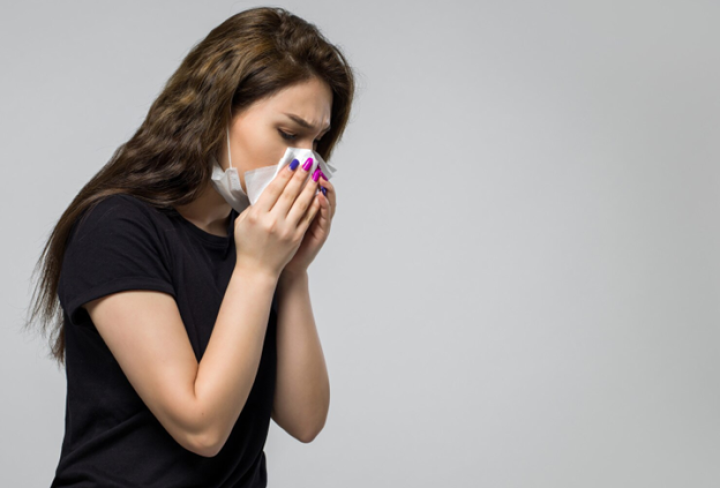Nosebleeds, known as epistaxis, occur when blood vessels in the nose burst. They are common worldwide and particularly noticeable in India due to environmental factors. Recognizing why nosebleeds happen and knowing how to prevent them can ease anxiety and improve safety. This guide explains how to deal with nose bleeding treatment efficiently, making the problem less worrisome for everyone.
Introduction
Epistaxis, or a nosebleed, is when bleeding occurs from the inside of the nose. It is frequent, with almost everyone experiencing it at some point in life. Globally, nosebleeds affect people from all walks of life. In India, due to its diverse climate and increasing pollution, nosebleeds are quite common.
Understanding the causes of epistaxis is crucial for reducing the distress it can cause. People may panic when blood suddenly appears, but knowing what causes a nosebleed can help manage anxiety. This knowledge empowers individuals to manage their health effectively. Aside from treatment, prevention strategies are vital. Simple lifestyle changes and awareness of environmental factors can significantly reduce the occurrence of nosebleeds. By understanding how to stop nose bleed and prevent them, people can take proactive steps to enhance their well-being.
The Anatomy of a Nosebleed
The nose is a delicate organ. It’s filled with many small blood vessels close to the surface. These vessels can easily break and cause bleeding.
Nosebleeds can be categorized mainly into two types:
- Anterior nosebleeds: These are the most common. They occur in the front part of the nose, where the blood vessels are fragile and break easily.
- Posterior nosebleeds: These are less common and happen deeper in the nose. They can be more serious and challenging to manage.
Anterior nosebleeds occur more frequently because the blood vessels at the front of the nose are more exposed and susceptible to irritation from things like dry air or physical impact. Knowing this anatomy helps understand why some nosebleeds are minor and others require medical attention. Though anterior nosebleeds are often harmless, understanding their onset helps ensure effective nose bleeding treatment. Recognizing the type of nosebleed is the first step in managing the condition.
What Causes Nosebleeds: Environmental and Health Factors
Various factors can lead to epistaxis. Some are related to the environment, while others involve lifestyle choices and health conditions.
- Environmental Causes:
- Dry weather: In dry climates, like those in many Indian regions, the nasal membranes can dry out and crack, leading to nosebleeds.
- Pollution: Cities in India with high pollution levels can irritate the nasal passages, increasing the likelihood of bleeding.
- Lifestyle Influences:
- Nasal sprays: Overuse of certain nasal sprays can damage the sensitive lining of the nose and lead to bleeding.
- Smoking: Smoke irritates the nasal membranes, making them more prone to bleeding.
- Health Conditions:
- Hypertension: High blood pressure can put more stress on the small vessels in the nose, resulting in nosebleeds.
- Nutritional deficiencies: Lack of vitamins like vitamin C or K may cause decreased vessel strength, leading to bleeding.
Identifying the causes of epistaxis helps in taking preventive actions. By addressing these factors, you can considerably decrease the frequency of nosebleeds, ensuring effective nose bleeding treatment by addressing root causes.
First Aid Tips: Managing a Nosebleed at Home
When a nosebleed occurs, there are practical steps to follow that can help stop the bleeding calmly:
- Stay calm: Panic can worsen the situation. Keep calm and act swiftly.
- Lean forward: Tilt your head slightly forward to avoid swallowing the blood.
- Pinch your nose: Use your thumb and forefinger to pinch your nose right above the nostrils.
Hold for at least 10 minutes then check if the bleeding has stopped. Repeat if necessary.
- Avoid lying down: Lying flat can lead to swallowing blood, causing irritation.
There are myths regarding how to stop nose bleed. For instance, tilting the head back is often suggested, but this can cause blood to drain into the throat. Instead, use safe, proven methods. Additionally, some effective home remedies use common ingredients:
- Ice pack: Applying an ice pack can constrict blood vessels, slowing down bleeding.
These practical steps help ensure safe first-aid and effective nose bleeding treatment at home.
Effective Strategies for Preventing Epistaxis
Prevention is key in managing epistaxis. Implementing simple lifestyle changes can make a big difference:
- Maintain nasal moisture: Use humidifiers or saline sprays to keep nasal passages hydrated, especially in dry weather.
- Limit exposure to pollutants: Make efforts to stay indoors on high pollution days and use air purifiers at home.
Adopt a healthy lifestyle to further minimize risks:
- Avoid tobacco use: Smoking can irritate nasal passages and should be avoided to prevent frequent nosebleeds.
- Balanced diet: Ensure an intake of essentials, especially vitamins like vitamin C, to strengthen blood vessels.
By following these strategies, individuals can effectively prevent epistaxis. Simple adjustments in daily habits can provide long-term benefits.
Recognizing When to Seek Medical Attention
While many nosebleeds are manageable at home, some situations require medical evaluation:
- Recurrent heavy bleeding: If nosebleeds become frequent and heavy, they need professional assessment.
- Difficulty stopping bleeding: If initial how to stop nose bleed methods fail, seek medical help promptly.
Knowing when to contact healthcare professionals is crucial. In India, resources such as local clinics and hospitals are readily available for such needs. Signals like significant blood loss or feeling faint during a nosebleed are warnings to seek professional care.
Conclusion
Understanding epistaxis involves knowing the causes, preventive measures, and how to handle nosebleeds. Common causes of epistaxis include environmental factors and health conditions, many of which can be addressed through simple lifestyle changes.
Effective first-aid usually involves relatively straightforward steps, contributing to efficient nose bleeding treatment. Being informed and proactive can help manage and prevent nosebleeds, ensuring you and your family can handle these situations calmly and competently.

